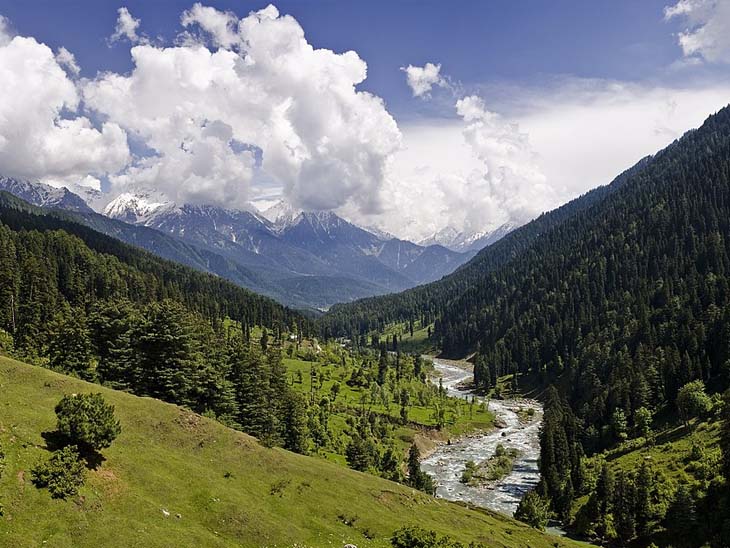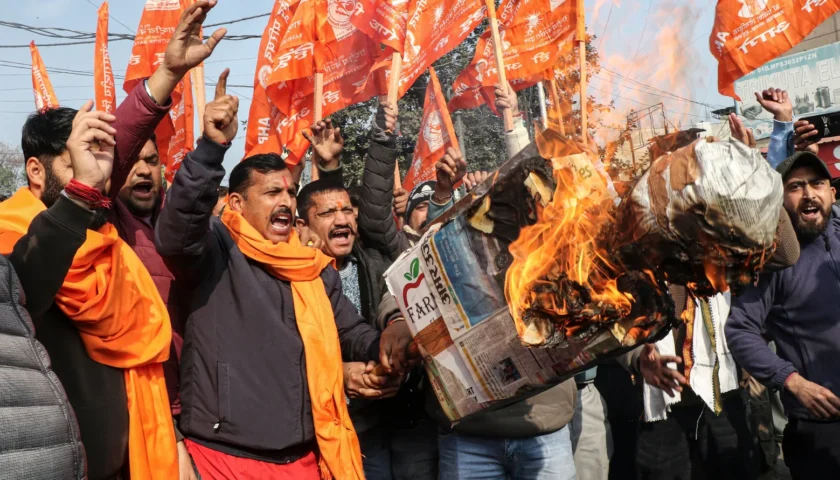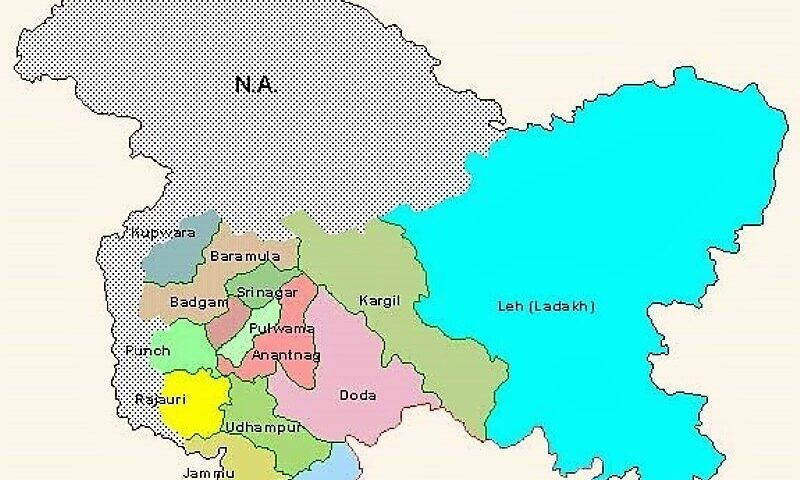Hope Returns to the Valley: 16 Tourist Destinations Reopened After Tragedy
In a significant boost to confidence and tourism recovery, the Jammu & Kashmir administration has reopened 16 prime tourist destinations—eight in the Kashmir division and eight in Jammu—effective June 17, 2025. These spots had been closed following the tragic terror attack in Pahalgam on April 22, which left 26 people dead, including pilgrims and locals.
This decision, following extensive ground-level security assessments, marks a critical turning point in the region’s ongoing efforts to revive its tourism economy and restore public morale.
“This is not just a reopening; it’s a message. A message of courage, normalcy, and forward movement,” said a senior tourism official during a press briefing in Srinagar.
Reopened Tourist Spots: Beauty Unlocked Again
The reopened locations span across the natural and cultural spectrum of Jammu & Kashmir, offering a rich mix of landscapes, religious sites, and recreational parks.
In Kashmir Division
-
Betaab Valley (Anantnag) – A cinematic paradise near Pahalgam, famed for its lush meadows and scenic trails.
-
Verinag (Anantnag) – Source of the Jhelum River, rich in Mughal architecture and freshwater springs.
-
Kokernag (Anantnag) – Known for its botanical gardens, trout farms, and gushing springs.
-
Achabal Gardens (Anantnag) – Historic Mughal-era garden reflecting Persian landscaping.
-
Badamwari Garden (Srinagar) – Almond blossoms in spring, now open for family outings and picnics.
-
Duck Park (Srinagar) – Lakeside charm with boating and children’s play areas.
-
Taqdeer Park (Srinagar) – A favorite urban green zone among locals.
-
Parks around Pahalgam Market Area – Including Lidder Park and Municipal Gardens, reopened under heightened security.
In Jammu Division
-
Sarthal (Kishtwar) – Hidden Himalayan getaway now open for trekkers and photographers.
-
Baggar (Reasi) – Meadowland with panoramic views and picnic areas.
-
Devi Pindi (Rajouri) – Religious pilgrimage site reopened for devotees.
-
Sehar Baba Waterfall (Reasi) – One of Jammu’s most-loved natural waterfalls.
-
Sulha Park (Udhampur) – Urban park with fountains and shaded trails.
-
Gul Danda (Doda) – A hilltop picnic spot with panoramic views.
-
Jai Valley (Bhaderwah) – Often called the ‘Mini Kashmir’ of Jammu.
-
Panchari (Udhampur) – Known for its apple orchards and forest trails.
These are not just places on a map—they are symbols of community life, culture, and the region’s timeless charm.
Also Read | Kashmir Awaits! Exclusive Deals on Honeymoon, Family Vacations & Amarnath Yatra
Security First: Why Reopen Now?
Ground Assessments Led the Way
Each site was reviewed through a multi-agency security audit, involving the J&K Police, CRPF, Army, and local administration. Surveillance cameras, deployment plans, mobile patrol units, and visitor flow control mechanisms have been upgraded before public reopening.
Lt. Governor Manoj Sinha: “The People’s Yatra Must Go On”
Lt. Governor Manoj Sinha called the reopening a “measured yet determined decision,” reflecting confidence in improved ground conditions.
“We are committed to protecting lives and livelihoods. Tourism is central to both. The upcoming Amarnath Yatra is the people’s pilgrimage. Let’s stand united to make it a safe and successful one.”
The LG’s statement was both symbolic and strategic—reassuring tourists, guiding policy, and honoring the victims by continuing what they loved most: exploring the land of saints and snow.
National Travel Industry Backs J&K Revival
TAFI’s National Pledge: “Kashmir is Safe for Travel”
In a remarkable display of unity, the Travel Agents Federation of India (TAFI) has declared “Kashmir is Safe.” Its chapters in Delhi, Mumbai, Kolkata, and Bengaluru have pledged support to the region’s tourism recovery plan.
“We’ve seen the security improvements. We’ve met local tour operators. And we’re telling every Indian family—yes, you can travel to Kashmir with confidence,” said TAFI President Rajeev Mehra.
Pan-India Promotions in Pipeline
TAFI is collaborating with the J&K Tourism Department to launch a nationwide awareness campaign titled “Return to Kashmir 2025.” Travel expos, social media reels, influencer trips, and curated family packages are in the works.
Also Read | Spiritual Serenity Meets Himalayan Majesty – Embark on Your Amarnath Yatra & Kashmir Adventure Today!
Tourism Is Economic Lifeblood: What’s at Stake
Tourism contributes over 8% of J&K’s GDP, directly employing nearly 3 lakh people across hospitality, transport, handicrafts, and agriculture.
Post-attack, hotel occupancy fell to 20–30% in places like Gulmarg, Pahalgam, and Sonamarg, down from pre-attack levels of 80–90%.
Shabir Wani, owner of a guesthouse in Pahalgam, said:
“For two months, we survived on hope and loans. Now that the gates are open, we pray the guests return.”
Crafts, Cuisine, and Community
Handicraft sellers in Badamwari and pony handlers in Betaab Valley are among the worst-hit. For many of them, every tourist is a day’s income.
“When tourists stop coming, it’s not just hotels that suffer—it’s our shawls, our kebabs, our music,” says Zohra Begum, a papier-mâché artisan in Srinagar.
Responsible Tourism in Focus: What Travellers Should Know
With reopening comes responsibility.
What Tourists Can Expect
-
Visible but friendly security presence at entry gates
-
E-brochures with safety tips and emergency contact numbers
-
Tourist Help Desks in Srinagar, Jammu, and Pahalgam
-
Pre-registration for certain high-traffic zones to avoid overcrowding
What Tourists Should Do
-
Respect local sensitivities
-
Avoid sensitive areas without a guide
-
Follow guidelines issued by local tour operators and police
-
Use official transport and guides for treks and adventure sports
This approach ensures security with serenity—a balance that Kashmir now proudly offers.
Also Read | Kashmir Tourism Reimagined: JKL Travels Unveils Unbeatable Discounts to Revive the Valley’s Charm
Amarnath Yatra 2025: The Litmus Test of Confidence
Set to begin on June 29, 2025, the Amarnath Yatra is expected to draw over 5 lakh pilgrims. All routes—including Pahalgam-Chandanwari and Baltal—are under layered security.
Authorities are keen to leverage this high-footfall event to reassure national and global audiences that Jammu & Kashmir is travel-ready again.
Helicopter services, RFID tagging, weather monitoring, and emergency medical posts have all been enhanced. Senior officials are visiting base camps for last-mile readiness checks.
“If the Yatra runs smoothly, it will boost confidence like nothing else,” says Dr. Farooq Khan, tourism researcher at SKUAST.
What’s Next in the Revival Plan?
According to Tourism Secretary Syed Abid Rashid Shah, this is just Phase 1 of the broader revival framework.
Coming Soon:
-
Reopening of Sonamarg to Zoji La adventure corridor
-
Relaunch of cultural festivals like Pahalgam Sufi Night and Srinagar Food Carnival
-
Public-private investments in eco-lodges, heritage walks, and smart tourism kiosks
Bottom-Line: A Valley that Refuses to Be Silenced
In Kashmir, every reopening is an act of resilience. Every tourist is a vote for peace. Every selfie on a mountain trail is proof that fear has not won.
Jammu & Kashmir’s decision to reopen these 16 destinations after the Pahalgam tragedy sends a clear message—not just to tourists, but to the world: Kashmir is back. Stronger, safer, and more welcoming than ever.
So pack your bags. Lace up your boots. The mountains are calling again.
Also Read | Reviving Tourism in Kashmir: Travel Agents Unite to Reboot Confidence




